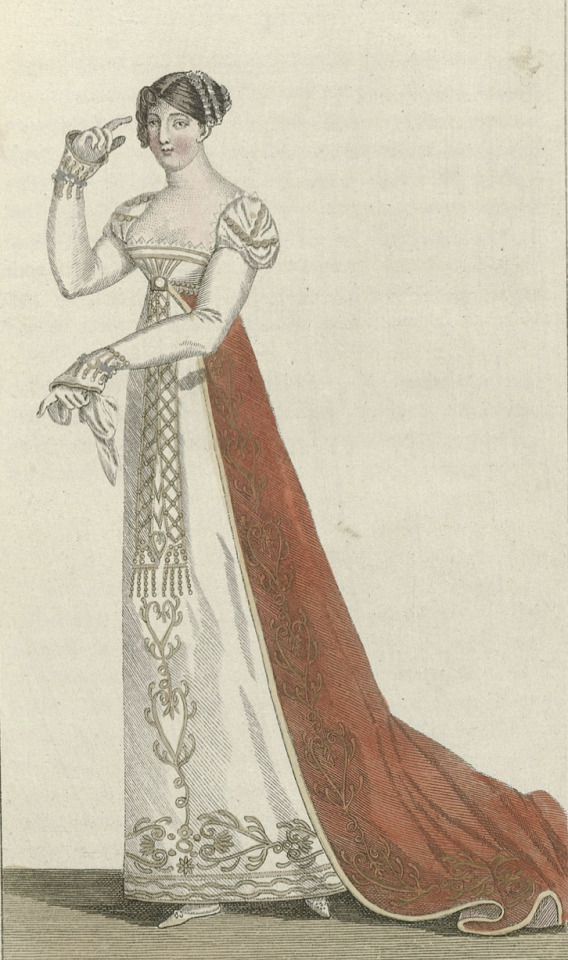#1809
Text
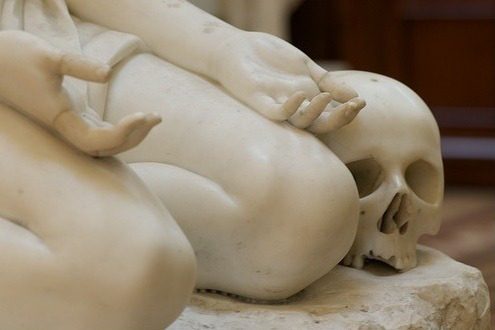
Antonio Canova: Maddalena Penitente (1809)
999 notes
·
View notes
Photo


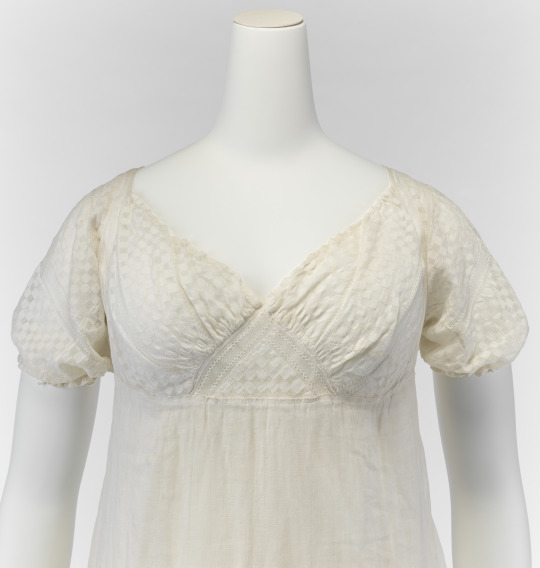
Evening Dress
c.1809
United States
The MET (Accession Number: 1976.142.1)
#evening dress#fashion history#historical fashion#1800s#empire era#19th century#white#cotton#united states#jeffersonian era#1809#the met
256 notes
·
View notes
Text

Vénus capturing HMS Ceylon / Combat De La Fregate "La Venus" Contre Les Anglais. 16 Septembre 1809, by Pierre-Julien Gilbert, 1835
142 notes
·
View notes
Text
ALL of La Fayette’s Grandchildren
(This post discusses the death and loss of children)
While four children are still pretty easy to keep track of, La Fayette’s abundance of grandchildren can be quite confusing. You often see the following graphic, published in Jules Germain Cloquet’s book:
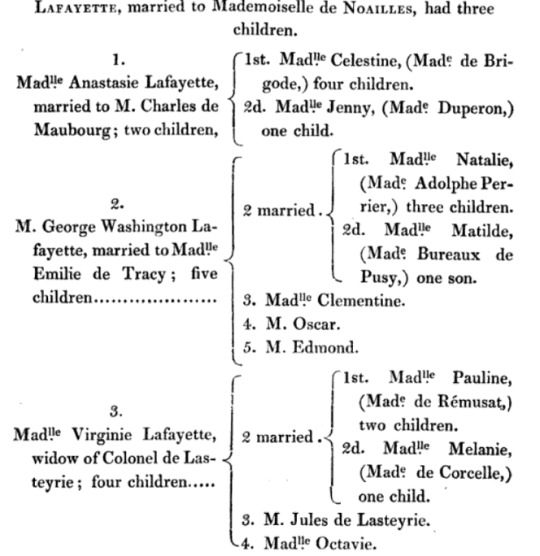
Jules Germain Cloquet, Recollections of the Private Life of General Lafayette, Baldwin and Cradock, London, 1835, p. 227.
All fine and dandy, but I was looking for more detailed information and I wanted to include the children that had already died by the time Cloquet publishes his book – I therefor made a graphic of my own. :-)
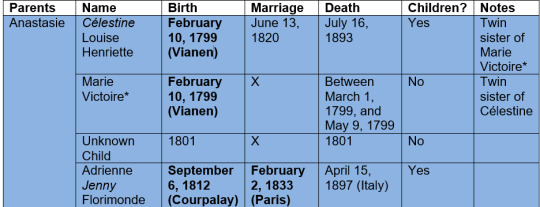
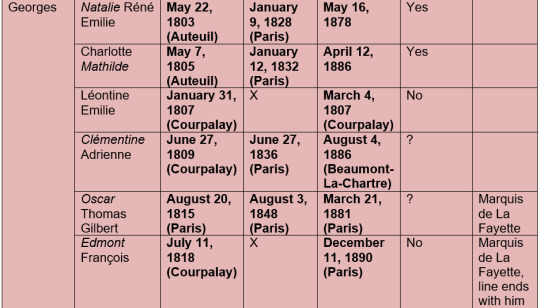
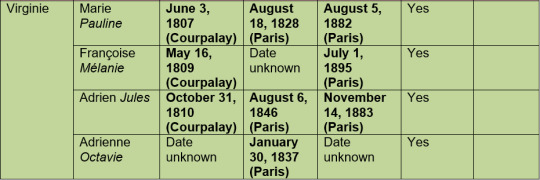
I am tempted to make one for the great-grandchildren as well, since La Fayette was very exited to become a Great-Grandfather – but this one was already a wild ride and La Fayette had more great-grandchildren then grand-children, let me tell you.
Anyway, some names are written in italics, these are the names the individuals commonly went by. I find it funny to see that all of Virginie’s children went by their second name, just like Virginie herself mostly just used her second name. Anastasie’s second child has an Asterix to her name. I have only once seen the name spelled out, on the certificate of baptism. The twins were baptized in Vianen (modern day Netherlands) and the name on the document was the Germanic spelling “Maria Victorina” – I used what I assumed is the best French spelling of the name.
The dates in bold indicate that the corresponding documentation of the birth/marriage/death can be found in the archives.
Anastasie and Charles: Finding Célestine’s dead twin sister was actually a surprise for me since I have never before seen her being mentioned. Anastasie gave birth for the first time in a town near Utrecht in what today are the Netherlands. The achieves there still have the certificate of baptism (on February 30, was the clerk sloppy or did the region in 1799 adhere to a different calendar style where February could have more then 29 days?) and we can very clearly see that there were too children. By May 9, 1799, La Fayette wrote to George Washington and referred to only one grand-child:
My wife, my daughters, and Son in law, join in presenting their affectionate respects to Mrs Washington & to you my dear g[ener]al the former is recovered & sets out for france on monday next with Virginia—our little grand Daughter [Célestine] is well, will your charming one accept our tender regard?
“To George Washington from Lafayette, 9 May 1799,” Founders Online, National Archives, https://founders.archives.gov/documents/Washington/06-04-02-0041. [Original source: The Papers of George Washington, Retirement Series, vol. 4, 20 April 1799 – 13 December 1799, ed. W. W. Abbot. Charlottesville: University Press of Virginia, 1999, pp. 54–59.] (02/12/2024)
I suspect that Anastasie had a stillbirth around August/September of 1801. La Fayette mentioned in a letter to Thomas Jefferson on June 21, 1801:
Anastasia Will Before long Make me Once More a Grand Father
“To Thomas Jefferson from Lafayette, 21 June 1801,” Founders Online, National Archives, https://founders.archives.gov/documents/Jefferson/01-34-02-0318. [Original source: The Papers of Thomas Jefferson, vol. 34, 1 May–31 July 1801, ed. Barbara B. Oberg. Princeton: Princeton University Press, 2007, pp. 403–404.] (02/12/2024)
There is no mention of this child being born and both the achieves in Paris and Courpalay yield no information so that it is unlikely that the child was born and then died young. Georges’ daughter died very young and she still is in the archives. Given La Fayette’s wording we can assume that Anastasie’s pregnancy was already somewhat advanced and the term miscarriage is only used up until the 20th week of a pregnancy, after that it is considered a stillbirth.
Georges and Emilie: The couple lost at least one daughter, Léontine Emilie, young, aged just four weeks. La Fayette wrote in a letter to Thomas Jefferson on February 20, 1807:
My family are pretty well and beg to be most affectionately respectfully and gratefully presented to you—We expected a Boy to be called after your name—But little Tommy has again proved to be a Girl [Léontine Emilie].
“To Thomas Jefferson from Marie-Joseph-Paul-Yves-Roch-Gilbert du Motier, marquis de Lafayette, 20 February 1807,” Founders Online, National Archives, https://founders.archives.gov/documents/Jefferson/99-01-02-5122. [This is an Early Access document from The Papers of Thomas Jefferson. It is not an authoritative final version.] (02/12/2024)
La Fayette later wrote to James Madison on June 10, 1807:
We Have Had the Misfortune to Loose a female Child of His, four Weeks old [Léontine Emilie]. My Younger daughter Virginia Has Lately presented us With an other infant of the Same Sex [Marie Pauline]. My Wife’s Health is Not Worse at this Moment, But Ever too Bad.
To James Madison from Marie-Adrienne-Françoise de Noailles, marquise de Lafayette, 10 June 1807,” Founders Online, National Archives, https://founders.archives.gov/documents/Madison/99-01-02-1768. [This is an Early Access document from The Papers of James Madison. It is not an authoritative final version.] (02/12/2024)
As a sidenote because it confused me while searching for the letter; the archives list Adrienne as the author. I am certain that is wrong because a) Adrienne was not corresponding with James Madison, b) this is not her writing style but La Fayette’s, c) the letter does not have her typical signature and d) there is the passage about the authors wife’s health – this one at the least gives it away.
Identifying Léontine Emilie was actually quite a bit of luck as well. I found the letter to Madison by accident and that letter is the only source that mentions her that I know of. I have never seen her in any other letters, documentation, contemporary or secondary books. The letter helped to narrow her birthday and her date of death down and with that information I searches the archives in Paris and Courpalay in the hopes of finding the child – and I was lucky. While I of course understand the order of things, it still saddens me to see that you can be born into such a prominent family – your father was a Marquis, your grand-father was the Marquis, and still, not even your families biographers care to even mention you.
Virginie und Louis: For all I know, and I again have to say that I have not nearly as much data/correspondence as I would like with regard to these topics, Virginie never lost a child. There is always the question what La Fayette would feel comfortable telling and to whom. There is also the question if La Fayette himself was always aware of everything. For example, in the case of a miscarriage very early on in the pregnancy he might have not included it in his correspondence or in fact maybe not even known himself.
As much as would wish a happy family life for Virginie, stillbirths, infant deaths and especially miscarriages were and still are not uncommon.
I have put excerpts from a few more letters by La Fayette to his American friends under the cut that help identify his grandchildren.
La Fayette to Thomas Jefferson, June 4, 1803:
I am Here, with my Wife, Son, daughter in law, and New Born little grand daughter [Natalie Renée Émilie] taking Care of my Wounds, and Stretching My Rusted Articulations untill I can Return to my Beloved Rural Abode at La Grange.
“To Thomas Jefferson from Lafayette, 4 June 1803,” Founders Online, National Archives, https://founders.archives.gov/documents/Jefferson/01-40-02-0361. [Original source: The Papers of Thomas Jefferson, vol. 40, 4 March–10 July 1803, ed. Barbara B. Oberg. Princeton: Princeton University Press, 2013, pp. 485–486.] (02/12/2024)
La Fayette to Thomas Jefferson, April 20, 1805:
Here I am with my son and daughter in law who is going to increase our family [Charlotte Mathilde]. Her father is to stand god father to the child and if He is a Boy we intend taking the liberty to give Him Your Name.
“To Thomas Jefferson from Marie-Joseph-Paul-Yves-Roch-Gilbert du Motier, marquis de Lafayette, 20 April 1805,” Founders Online, National Archives, https://founders.archives.gov/documents/Jefferson/99-01-02-1556. [This is an Early Access document from The Papers of Thomas Jefferson. It is not an authoritative final version.] (02/12/2024)
La Fayette to Thomas Jefferson, April 8, 1809:
(…) My Children are in Good Health. Two of them, My daughter in Law [Clémentine Adrienne], and Virginia [Françoise Mélanie] are Going to increase the family.
“To Thomas Jefferson from Marie-Joseph-Paul-Yves-Roch-Gilbert du Motier, marquis de Lafayette, 14 December 1822,” Founders Online, National Archives, https://founders.archives.gov/documents/Jefferson/98-01-02-3215. [This is an Early Access document from The Papers of Thomas Jefferson: Retirement Series. It is not an authoritative final version.] (02/12/2024)
#marquis de lafayette#la fayette#french history#history#letters#founders online#george washington#thomas jefferson#james madison#archieve#resources#1799#1801#1812#1803#1805#1807#1809#1815#1818#1810#georges de la fayette#anastasie de la fayette#virginie de la fayette
37 notes
·
View notes
Photo

Battle of Wagram, 1809.
by LegendesCarto
45 notes
·
View notes
Text
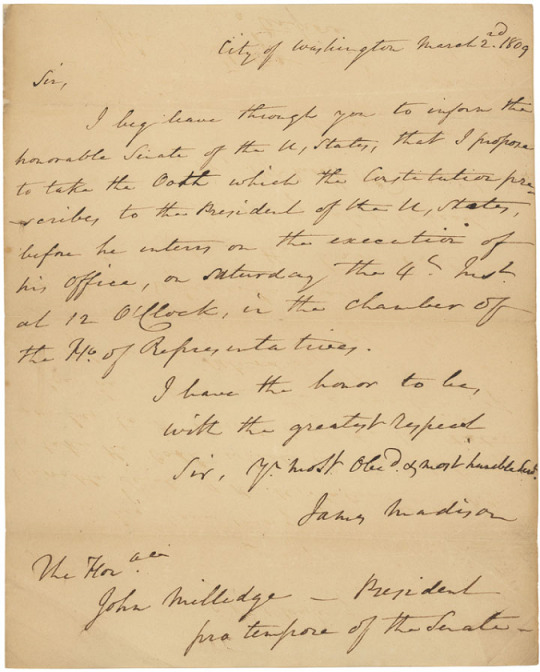
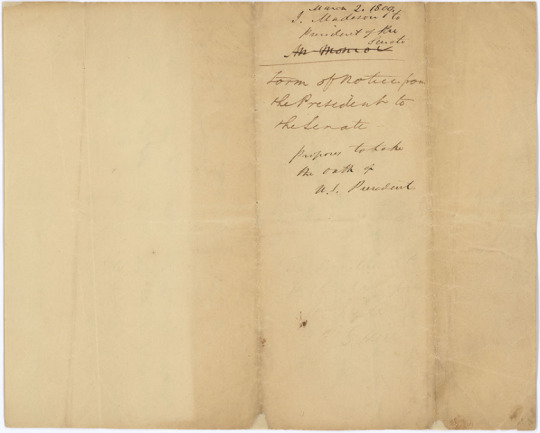
Letter from President-elect James Madison to John Milledge, President Pro-tempore of the Senate
Record Group 46: Records of the U.S. SenateSeries: Original Reports and Communications Transmitted to the SenateFile Unit: Reports and Communications Submitted to the Senate during the 10th Congress
City of Washington March 2.nd 1809 Sir, I beg leave through you to inform the honorable Senate of the U. States, that I propose to take the Oath which the Constitution pre- scribes to the President of the U. States, before he enters on the execution of his office, on Saturday the 4.th Ins.t at 12 o'clock, in the chamber of the Ho. of Representatives. I have the honor to be, with the greatest respect Sir, yr. most obe.d & most humble servt. James Madison [signature] The Hon.al John Milledge - President pro tempore of the Senate ~
March 2.1809 J. Madison to President of the Senate M Monroe [struck through] _______________ Form of Notice from the President to the Senate Proposes to take the oath of U.S. President
20 notes
·
View notes
Text
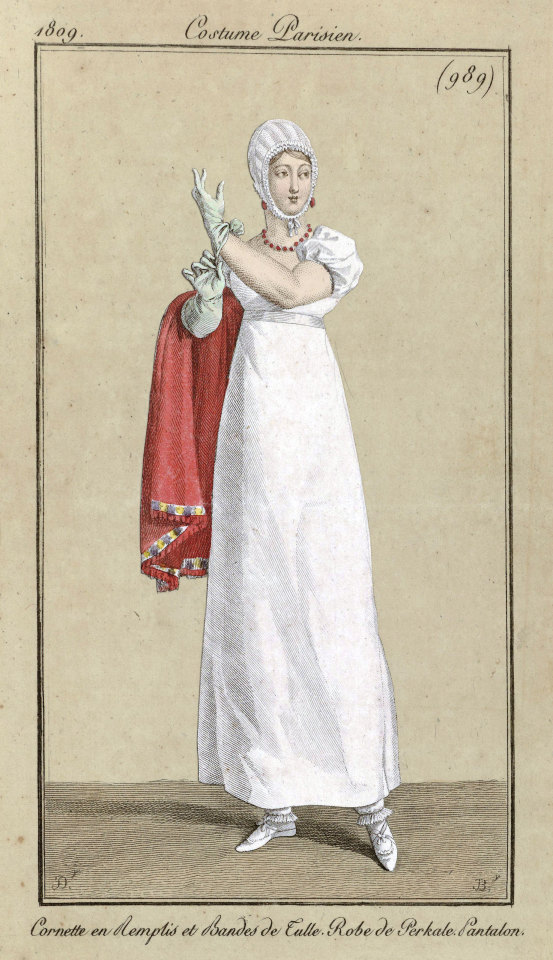
Journal des Dames et des Modes, Costume Parisien, 15 juillet 1809, (989): Cornette en remplis et Bandes de Tulle. Robe de Perkale. Pantalon. Collection of the Rijksmuseum, Netherlands
Standing woman with a 'cornette' on her head with 'remplis' and bands of tulle. She wears a dress with short puffed sleeves of cotton percale on long trousers. Further accessories: earrings, necklace, gloves, scarf trimmed with fringes, flat shoes with crossed straps. The print is part of the fashion magazine Journal des Dames et des Modes, published by Pierre de la Mésangère, Paris, 1797-1839.
#Journal des Dames et des Modes#19th century#18aughts#1809#on this day#July 15#periodical#fashion#fashion plate#color#description#rijksmuseum#dress#cornette#shawl#Mésangère
55 notes
·
View notes
Photo

Maddalena penitente, 1809 by Antonio Canova (1757-1822)
#maddalena#penitente#sculpture#memento mori#skull#details#detail#Antonio Canova#sculptor#Italian Neoclassical#1809#19th Century Art#19th century#XIX century
337 notes
·
View notes
Text



The Little Beggar, c. 1808-09, Napoleonic era
By Hortense Haudebourt-Lescot, French
The Little Beggar is one of the earliest known works by the artist, who arrived in Rome a few months after her professor, Guillaume Guillon-Lethière, had been appointed director of the Academy of France in its new home in the Villa Medici. The subject is exceptional in showing a beggar in such a compassionate light; while he is clearly asking the viewer for money, he is a sympathetic, not a threatening figure, reflecting a significant change of attitude towards the less fortunate.
Literature
François Guizot, De l’état des Beaux-Arts en France et du Salon de 1810, Paris, Maradan, 1810, p. 99
Pierre François Gueffier, Entretiens sur les ouvrages de peinture, sculpture et gravure, exposés au Musée Napoléon en 1810, Paris, Gueffier jeune, 1811, p. 157
C. P. Landon, Salon de 1810, p.104
Paul Menoux, Hortense Haudebourt-Lescot, Catalogue Raisonné, Paris, Arthena (to be published).
TEFAF Maastricht
#Hortense Haudebourt-Lescot#Le Petit Mendiant#TEFAF Maastricht#TEFAF#maastricht#19th century#napoleonic era#napoleonic#art#women artists#neoclassical#1808#1809#19th century art#female artists#female painters#women in art#auction#auctions
14 notes
·
View notes
Text
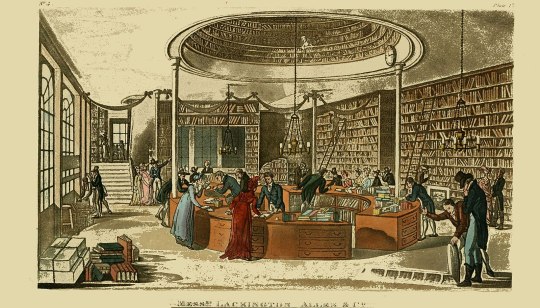
Lackington Allen & Co.: Temple of the Muses, Finsbury Square
Print of a bookshop from 1809
#lackington allen & co#temple of the muses#1809#1800s#19th century#georgian#regency#print#books#bookshop#book seller
19 notes
·
View notes
Text
James Madison at his Inaugural Ball in 1809

#margaret bayard smith#dolley payne todd#dolley madison#james madison#founding fathers#shitpost#thomas jefferson#inaugural ball#presidency#american presidents#colonial america#1809#inauguration day#scrumptious meals
103 notes
·
View notes
Text
The Galician campaign of 1809
Today let me tell you a little bit about the Galician campaign of the Austro-Polish war of 1809, which proved to be a great success for the Duchy of Warsaw.
After the battle of Raszyn there happened the series of small battles, which prevented Austrians from crossing the Vistula, thus leaving the initiative on the right bank of the river firmly with the Poles. So, the Polish forces under Poniatowski’s command moved along Vistula to the South-East, to the lands Austria seized during the latest partition of Poland.
On the 14th of May the Polish Army entered Lublin:
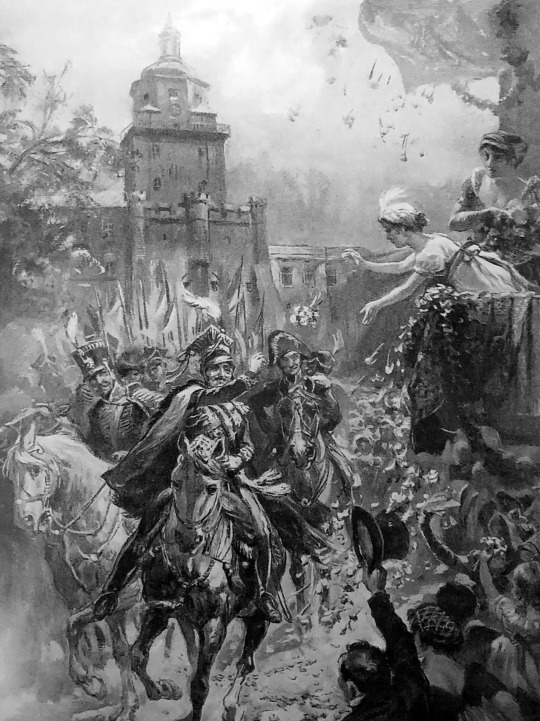
Konstanty Gorski, "Prince Józef Poniatowski enters conquered Lublin in 1809, showered with flowers by ladies"
As Kajetan Koźmian recalls in his memoirs, Poniatowski and his men were greeted with "joy and elation", and in the evening "... the city and the citizens gave a great ball <...> in the house in Korce. Prince Józef honored them with his presence starting the ball."
The next city on the way of the Polish Army was Sandomierz, and after a short siege it was taken on the 18th of May.

Siege of Sandomierz in 1809.

Michał Stachowicz, a scene from the battles in Galicia ("The Capture of Zamość")
Then there was Zamość, where the Polish trooped entered on the 20th of May.
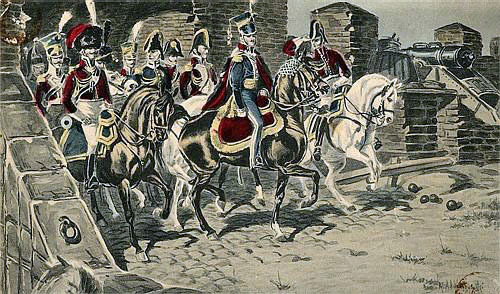
Siege of 1809, M. Adamczewski Entry of Prince Poniatowski to Zamość (postcard)
On the 27th of May the Polish advanced forces even reached the city of Lwów, but prince Józef wasn’t among them.
Meanwhile the Austrians under command Archduke Ferdinand realized the precariousness of their position in the center of Poland, and on the 1st of June left Warsaw for the south.
Poniatowski, for his part, decided not to engage with the Austrian, focusing instead on "liberating” as much Galician land as possible.

Prince Józef Poniatowski seeks information from local peasants in Galicia in 1809, a photo of Stanisław Bagieński's painting
On the 3rd June there appeared the third participant of the events - Russian forces crossed the Austrian border to Galicia as well. And though formally they were acting as Napoleon’s ally, as was prescribed in the Tilsit Treaty, their real goal was to prevent the Poles from taking too much of the Austrian-held territories.
So, to outwit the Russians prince Józef was taking Galician cities not in the name of the Duchy of Warsaw, but in the one of emperor of the Frenchmen. Like the proclamations were being made in the name of Napoleon, the eagles on the coats-of-arms replacing the Austrian ones were not Polish and French etc.
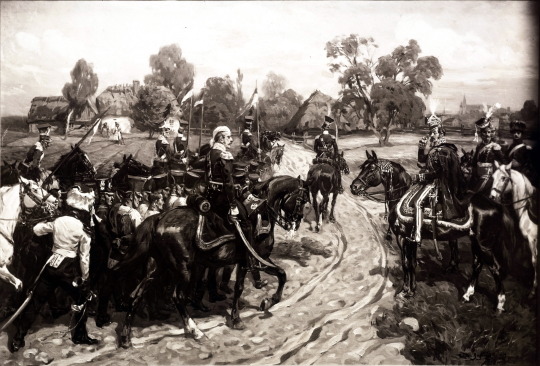
Lancers lead Austrian prisoners of war near Kraków in 1809, in front of Prince Józef Poniatowski, a photo of Stanisław Bagieński's painting
Then, in the outer theater of war on the 6th of July the French defeated the Austrians at the Battle of Wagram. And according Franco-Austrian truce signed five days later the land division was to take place along the line where the troops were at the time of receiving news of the truce, not at the time its signing.

The Austrian army leaves Wawel, a postcard based on the painting of Wojciech Kossak
And so began the race between Russians and Poles, to advance to as farther as possible.
In the middle of July both armies reached Kraków.

PRINCE JOSEPH'S ENTRY TO KRAKOW. A drawing by Jan Feliks Piwarski.
And there the clash of the interest took place.
Poniatowski approached the city from the side of St. Florian's Gate, but it turned out that the Austrians, wanting more comfortable terms of capitulation, had already let Russian troops into Kraków.
The Russians, namely the Cossacks of General Sievers, wanted to deny Poniatowski passage. But Prince Józef, as Dezydery Chłapowski recalls in his memoirs, "draw his broadsword and with together his staff galloped into the gate through the Cossacks". The Polish infantry followed its commander "in a double step <...> so that the Cossacks were pressed against the walls of the gate." Seeing this, Mariampol's hussar regiment, which was stationed at that time in the market square, make a decision to put up resistance and due to this, the whole Polish army was able to enter the city.

Michał Stachowicz, The entry of Prince Józef Poniatowski into Krakow on July 15, 1809
Then, as Ambroży Grabowski recalled, when prince Józef’s troops reached the market square, “in front of the church of St. Wojciech, the magistrate went out to meet the prince, to give him the keys of the city”.
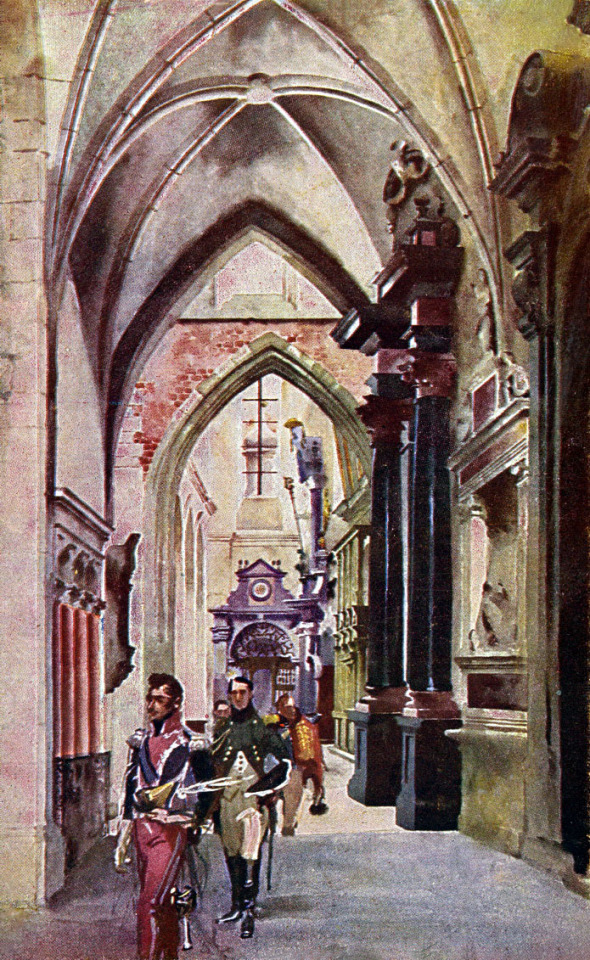
Józef Poniatowski in the Cathedral after Kraków was taken from the Austrians, an image by Stanisław Tondos and Wojciech Kossak
Most probably prince Józef visited the Wawel cathedral during his sojourn in Kraków that time. (In a small voice: little did he know that in 8 years he’ll be buried there...)
And after exactly a month since the Polish troops entered Kraków, there was a ball arranged in the Cloth-hall, the image depicting it I have already posted here.
#Poniatowski#Jozef Poniatowski#józef poniatowski#1809#Galicia#Lublin#Sandomierz#Zamość#Kraków#Austro-Polish War#Konstanty Gorski#Michał Stachowicz#Stanisław Bagieński#Wojciech Kossak#Feliks Piwarski#Kajetan Koźmian#Dezydery Chłapowski#ambroży grabowski
32 notes
·
View notes
Photo
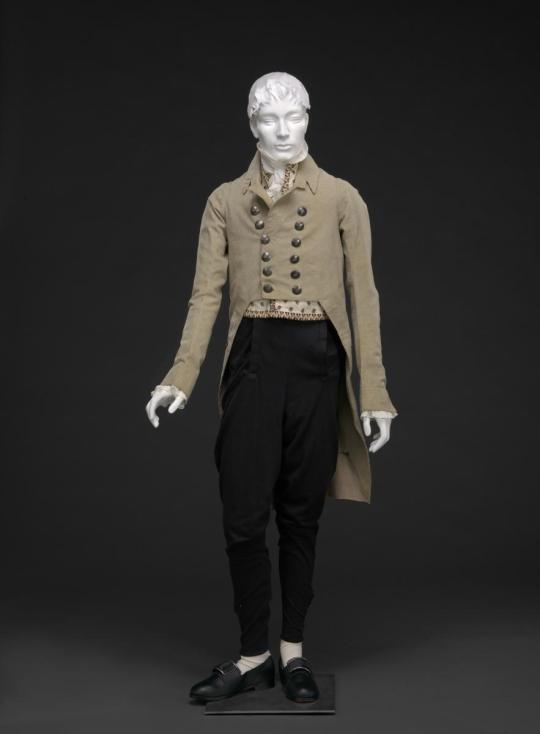
Ensemble
c.1805-1810
United States
Daughters of the American Revolution Museum
#ensemble#menswear#fashion history#historical fashion#1800s#1810s#19th century#empire era#jeffersonian era#1805#1809#1810#coat#pants#vest#tailcoat#united states#grey#black#mensfashion#DAR museum
178 notes
·
View notes
Text

The Brig 'Diomede' of Salem,1809, by Roy Cross (1924-)
100 notes
·
View notes
Text

The Abbey in the Oakwood (1809/10) by Caspar David Friedrich
#The Abbey in the Oakwood#1809#1810#Caspar David Friedrich#Romanticism#Halloween#spooktober#spooky season#Miss Cromwell#art#painting
18 notes
·
View notes
